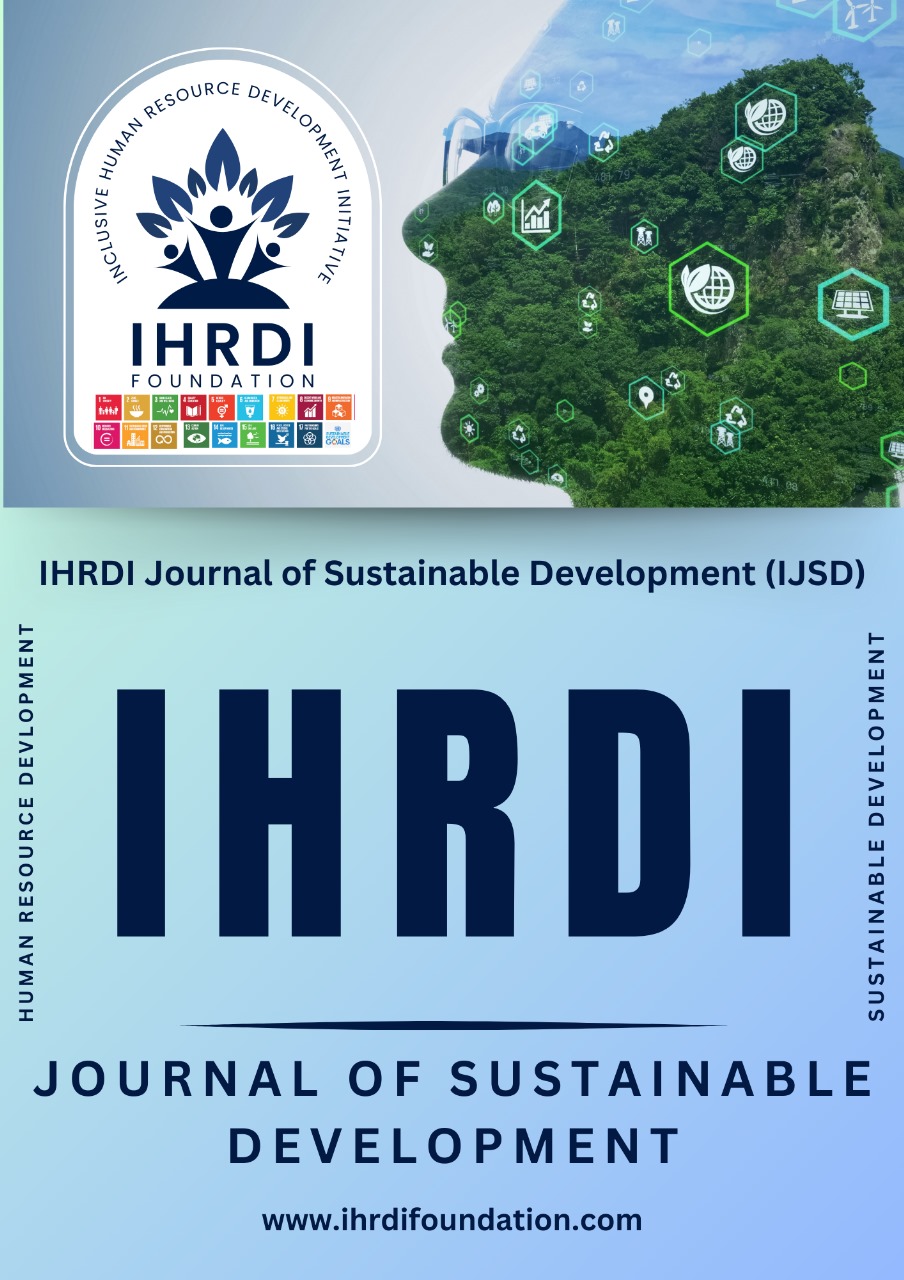Perception Concepts of Beneficiaries for Strengthening the Livelihood Options While Developing Resilience to Climate Change - A Case Study of DFID Project in in Himachal Pradesh
Abstract
To study and analyze the perception of beneficiary households for strengthening the livelihood options while developing resilience to climate change a study was carried out in two Panchayats ( Naineti & Kathlibharan) of rural areas of HP. Forest Department of HP acted as a facilitator and coordinated with other line departments through VFDC and GDST to execute various components of the project in the field. “with” and “without” approach was used for analyzing the impact of project intervention. Multistage purposive cum random sampling techniques were used for selecting villages and households. Two panchayats adjoining these selected panchayats having similar agro-climatic conditions were also selected to draw a sample of beneficiaries for each village to act as the control. Data analysis worked out in percentage suggests that higher literacy rate, family size and land holding among the beneficiary households has played a significant role in their perception of the Strengthening the livelihood options for sustainable economic growth, productive employment and protection of Environment which they found as quite effective in solving their conflicts, increase in farm income, reduction in dependency on forests by growing plantations of fuel, fodder and timber on their own land. Participation in Participatory Rural Appraisal (PRA) exercise though low, reflects that people take longer time to come out of inertia and understand the projects benefits at the planning stage. Beneficiary households found that rural development activities with Incentives have helped them to adopt PFM approach. Improvement in infra structures has been quite effective to take their produce directly to the market yard to get some better prices. Incentives provided under the project have certainly triggered a thought-provoking process towards their participation which provided a support to sustain their lively hood and generate income to improve socio-economic profile. Sensitivity of beneficiary households towards forest offences has further helped in restocking the forests and use of forests and other natural resources on sustainable basis. Use of LPG/ Gober gas in place of fuel wood is a step towards carbon sequestration from the environment on the one hand while reducing the burden on the forest for the extraction of fuel wood –a step to mitigate the effects of climate change. Meeting of fodder requirements occasionally from own land and stall feeding has certainly reduced the biotic pressure on the forest land as a result trampling of young shoots of plant species due to open grazing could be reasonably avoided.
References
Chandrawat M.P.S. and Pramodh K. Merkap (1999). JFM in Raj Rishi Gram Rllvan Deora (an inspiring experiment of participative dynamics) The Indian Forester 125(9): 823-27.
Danks, C (2000). Community forestry initiatives for the sustainable rural livelihoods: a case study from North America Unasylva,202(51):53-62.
Dasgupta, Saibal (2000). People's involvement, in resource management in Madhya Pradesh The Indian Forester. 126(5): 525-35.
Hobley, M. (1992). Policy, rights and local forest management: the case of Himachal Pradesh, India. Rural Development Forestry Network Paper No. Db. 001, UK. 32pp.
Khanna, Pardeep (1994). Research agenda for joint forest management The Indian Forster. 120 (7): 564-69.
MoEF, (1996). People’s Participation in Forestry joint forest management Regional Centre National Afforestation & Eco-development Board (Ministry of Environment & Forests, Govt. of India) Agricultural Finance Corporation ltd. Bombay Northern Regional office, New Delhi.
Poffenberger & Betsy Mc. Gean, (1998). Village voices, forest choices joint forest management in India Oxford University press New Delhi.
Ramachandra Guha, (1998). Village voices, forest choices Joint Forest Management in India. Oxford University Press (1998) New Delhi, from Chapter-3 (Page 86) titled “Dietrich Brandis and Indian Forestry : a vision revisited and reaffirmed.
Rastogi,Alind, (2000). Joint Forest Management in India, Surya international publishers.
Rawat, J.K. and Rajesh (2000). Participatory approach in Indian forestry: in historical perspective. The Indian Forester 126(5) pp 449-51.
Wignaraj et al. (1990). Participatory development Learning from South Asia , United Nations University Press.
Copyrights for articles are retained by the authors, with first publication rights granted to the journal/publisher. Authors have rights to reuse, republish, archive, and distribute their own articles after publication. The journal/publisher is not responsible for subsequent uses of the work. Authors shall permit the publisher to apply a DOI to their articles and to archive them in databases and indexes such as EBSCO, DOAJ, and ProQuest.

